Tom's Guide Verdict
With great battery life, sleep insights, mobile payments and a full slate of features coming with software updates, Fitbit's new smartwatch almost has it all.
Pros
- +
Up to four-day battery life
- +
Music storage
- +
Quick and easy mobile payments
- +
Accurate and insightful sleep analysis
Cons
- -
Design
- -
Touch screen sometimes unresponsive
- -
Not many apps (yet)
- -
No always-on display
Why you can trust Tom's Guide
Fitbit's first smartwatch-like device, the Blaze, wasn't well-received. It lacked style, had no apps and required a smartphone for even the most basic functionality, like GPS. So Fitbit went back to the drawing board.
Update 03/02/22: The Fitbit Ionic has been recalled by Fitbit after dozens of users reported burns. If you do have a Fitbit Ionic, you can recall it now for a refund.
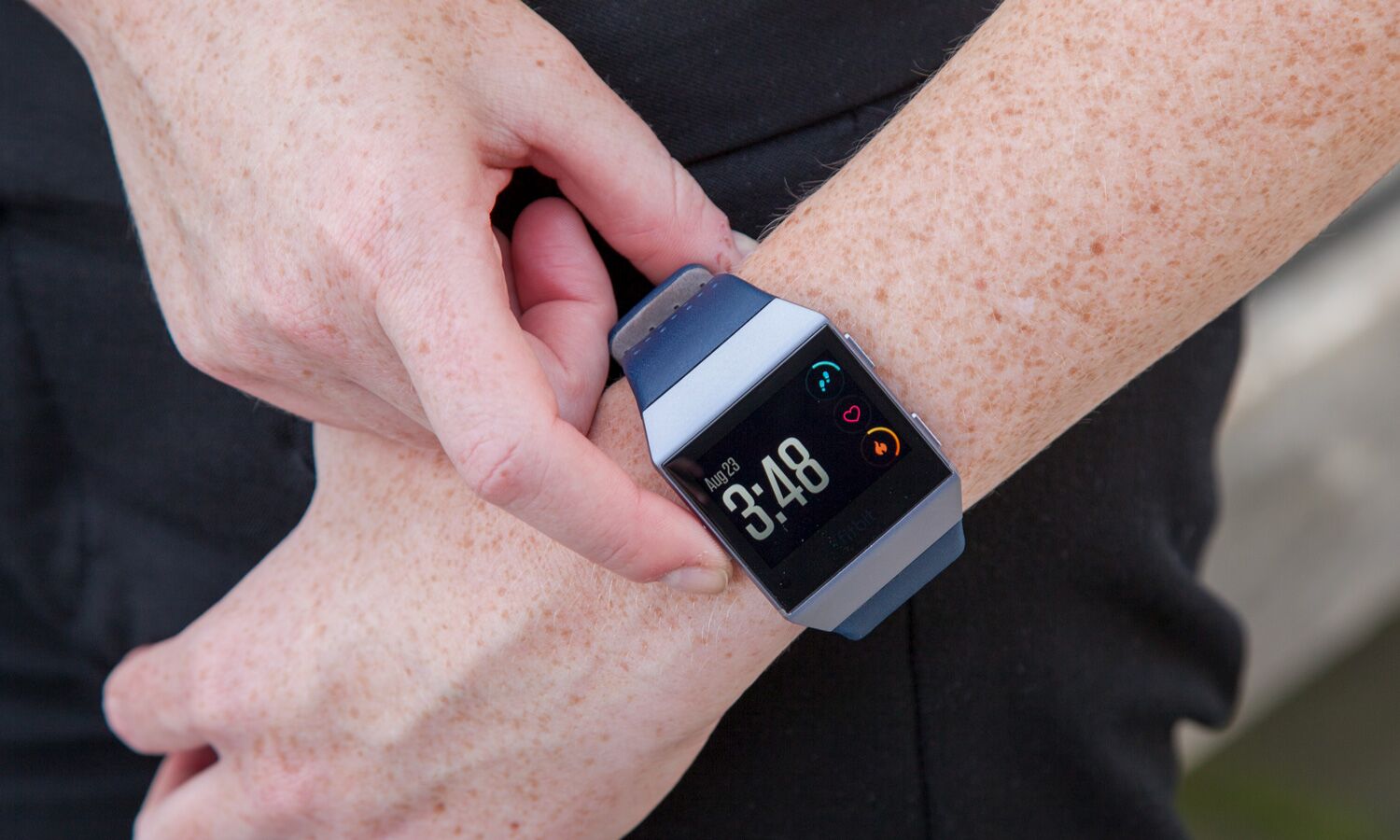
The result is the Fitbit Ionic, which the company is calling its first real smartwatch. This device is a huge improvement over its predecessor, with features such as GPS, NFC for payments, music storage and an app store that lets the watch shine even when there's no smartphone in your pocket. I just wish it looked better.
Editor's Note: The Fitbit Ionic is being replaced by the Fitbit Sense ($329), a new smartwatch that has GPS, can track AFib, and has sensors that can also monitor your skin temperature and stress, and offer guidance on how to improve. The Sense also has built-in music storage, Fitbit Pay, and will last up to six days on a charge.
If you own a Fitbit Ionic, nspire HR, Charge 3, Charge 4, Versa, Versa 2, or Versa Lite, you can enroll in Fitbit's new heart study, and the company will notify you if your device detects an irregular heart rhythm that indicates AFib. Fitbit will also connect you with a doctor for a free consultation. The Fitbit Heart Study, open to U.S. residents 22 years or older, is being conducted to determine how accurate its devices are in detecting atrial fibrillation, as the first step to receiving FDA approval. Here's how to sign up for the Fitbit Heart Study.
A Face Only Fitbit Could Love
Let's get the obvious criticism out of the way: I hate the Ionic's design. It's like Fitbit took a 1980s vision of a 21st-century smartwatch and updated it very slightly with more modern materials.
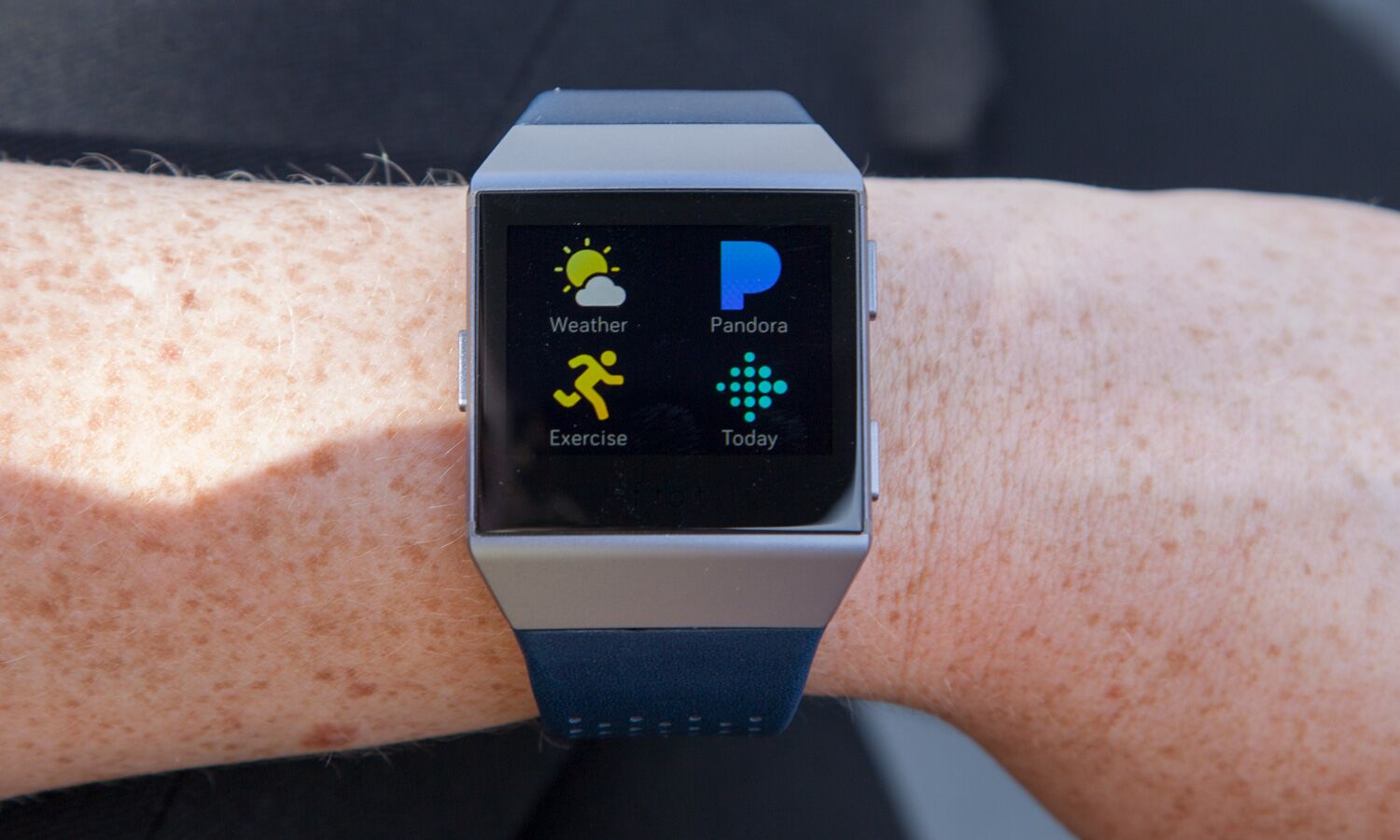
The watch is 38.6mm wide, but the 349 x 250, color, LCD touch-screen display takes up just 29.7mm of that width. The rest is black bezel, which is thicker on the chin where Fitbit put its logo. The actual display should be much larger, and the bezels on all sides should be significantly thinner.
It doesn't help that this watch looks ridiculous on me, which made it hard to love. The thick aluminum frame that surrounds the display and houses the springs for swapping out the Ionic's band didn't conform to the curves of my wrist, leaving gaps large enough that I could see the sun through them.
- Best Fitbit: Choose the best tracker for your needs
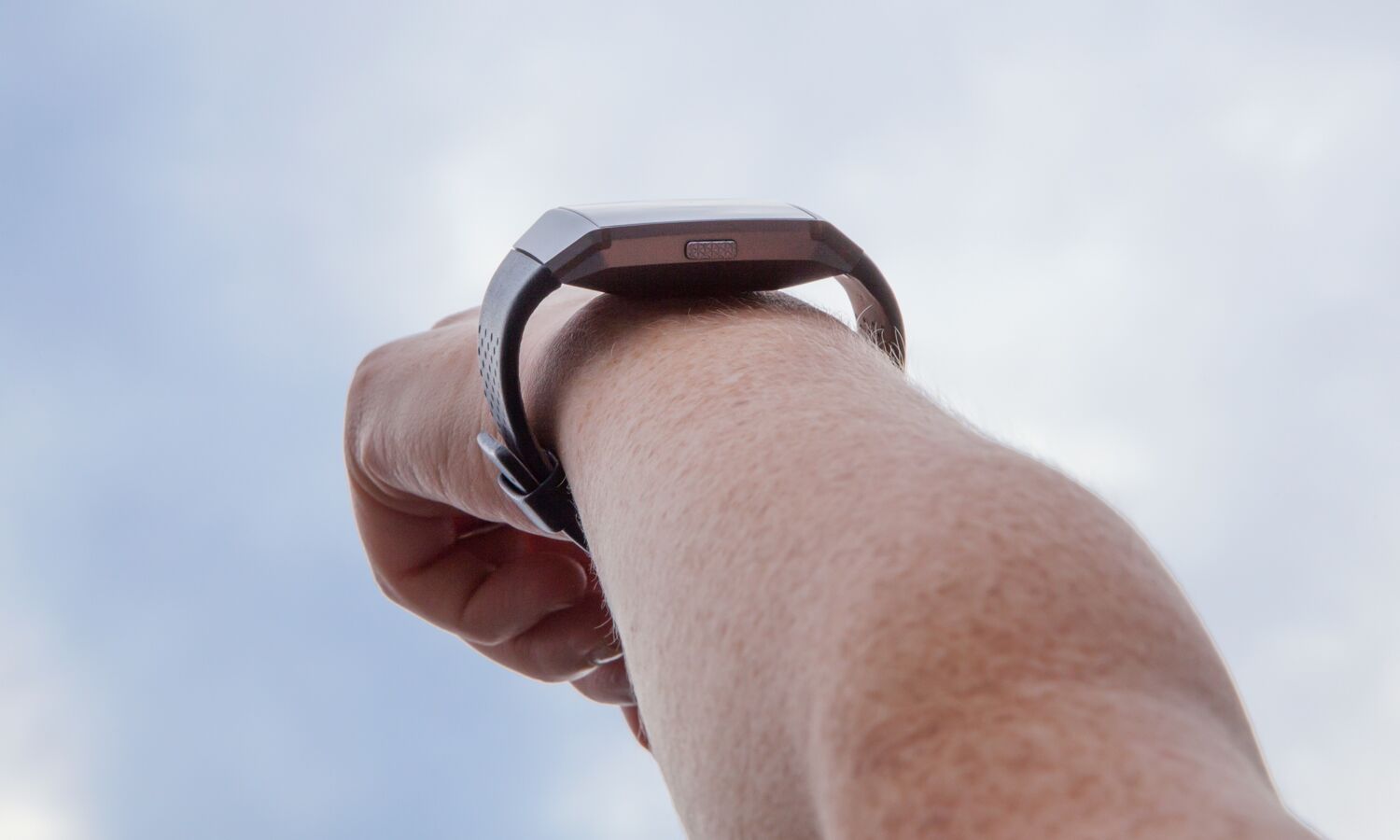
Design is subjective, and my wrist is on the small side, so not everyone will have the gap problem I experienced. But companies that fail to make smartwatches in sizes that can accommodate all wrists will struggle to gain widespread adoption, because they're limiting themselves to half the market.
• Best Fitbits: Which fitness tracker is right for you?
The frame houses the GPS antenna, which Fitbit says makes for a stronger connection, but I wish the Ionic had taken some cues from the newer, round, stylishly oversized Android Wear 2.0 smartwatches. Even the square Apple Watch, with its rounded corners, is more fashion-forward than Fitbit's take. This device is just too large, too bulky and too square to work for many people.
At least the Ionic looks better than the Fitbit Blaze. That's something.
Fitness Remains the Focus
Apps won't be the reason most Fitbit fans buy this watch. Those are simply a bonus on top of Fitbit's suite of fitness-tracking features, which get even better on the Ionic.
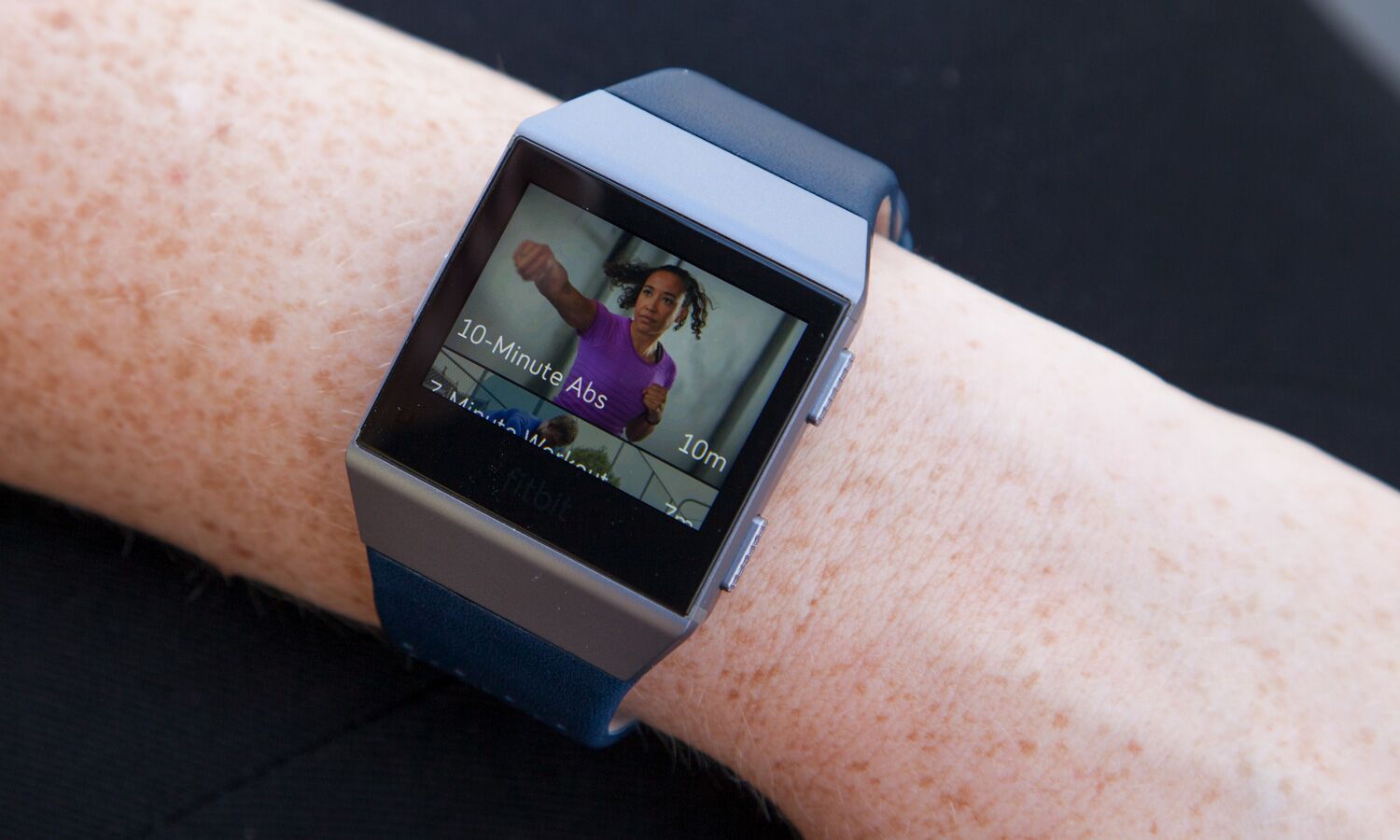
The new smartwatch finally puts Fitbit features that have been scattered across the company's lineup in one device. The Ionic sports GPS, continuous heart rate-monitoring, guided workouts in the new Fitbit Coach app, swim-tracking, and a run-detect feature that turns on GPS and starts tracking your stats when you've been running for 2-5 minutes. You don't have to select a workout or press any buttons; it happens automatically.
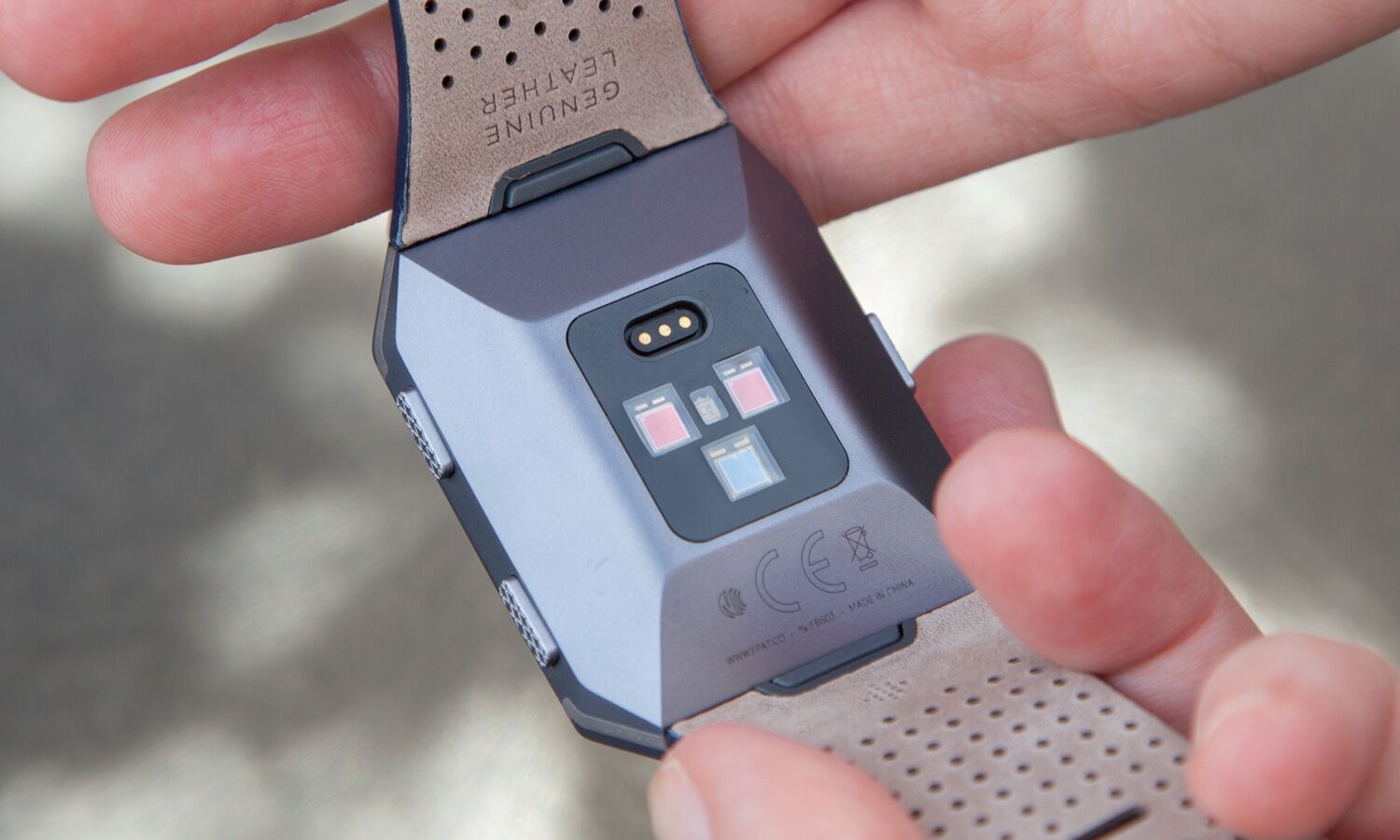
This feature is beneficial for those of us who run in the mornings. When I forgot to start a workout in the Exercise app on the Ionic watch face, it didn't matter — after I ran for about a minute and a half, the watch would activate GPS and launch the Exercise app for me. It logs the data for your entire run, not just the point where GPS kicks on, which is useful.
This watch looks ridiculous on me, which makes it hard to love.
The Ionic is water-resistant for up to 50 meters (same as the Apple Watch) and has a lap-swim workout option in the Exercise app. I worked out with the Ionic in a pool and can attest to its water-resistance, although I am the world's slowest swimmer and can't vouch for the accuracy of the device's lap counts.
MORE: The Best GPS Watches for Sports and Athletics
Fitbit improved its fitness-tracking sensors and the algorithms behind them, and added an SpO2 sensor for eventually detecting sleep apnea. That feature isn't available yet, but I tracked multiple runs wearing both an Ionic and an Apple Watch Series 2, and the heart rate data on the two devices matched up perfectly.
Where Fitbit Shines
With Ionic, Fitbit nails two things that no other smartwatch has managed: sleep tracking and battery life.
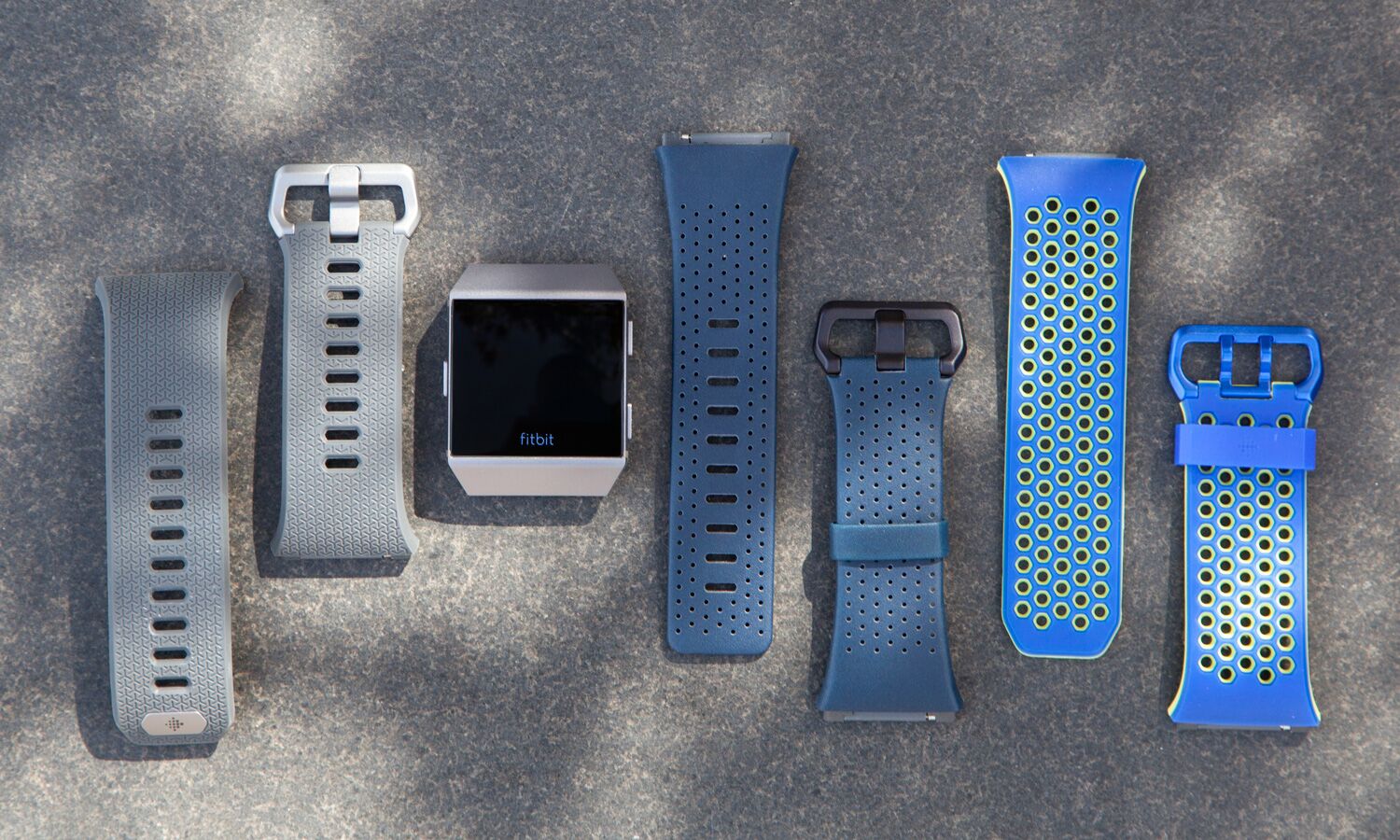
Like the Charge 2 and Alta HR before it, the Ionic uses your heart rate to graph your sleep cycles, so you can see how much time you spend in REM, light or deep sleep each night. The sleep and wake times are accurate, and the Ionic can also sense when you wake during the night. So, when you sync the device to the Fitbit app in the morning, it can tell you how restless your sleep was.
The Ionic finally puts Fitbit features that have been scattered across the company's lineup in one device.
Although I can't say for certain how accurate the sleep analysis is, it seemed spot on. The times I remembered being restless and glancing at my bedside clock, Fitbit marked as time spent awake.
MORE: 9 Odd Ways Your Tech Devices May Injure You
Other smartwatches offer sleep-tracking apps in their app stores, but few have the battery life of the Ionic. My device lasted about three days on a charge, and that included 30-45 minutes of daily GPS use in the Exercise app and Pandora music playback. Fitbit promises the Ionic will last up to four days on a charge, or 10 hours with continuous GPS use. I have to charge my Apple Watch Series 2 every day after putting it through the same amount of exercise tracking and music playback.
Fitbit OS Is an App Platform with Few Apps
The Ionic is a full-fledged smartwatch thanks to Fitbit's new Fitbit OS software platform, which means you can install apps created specifically for this device.
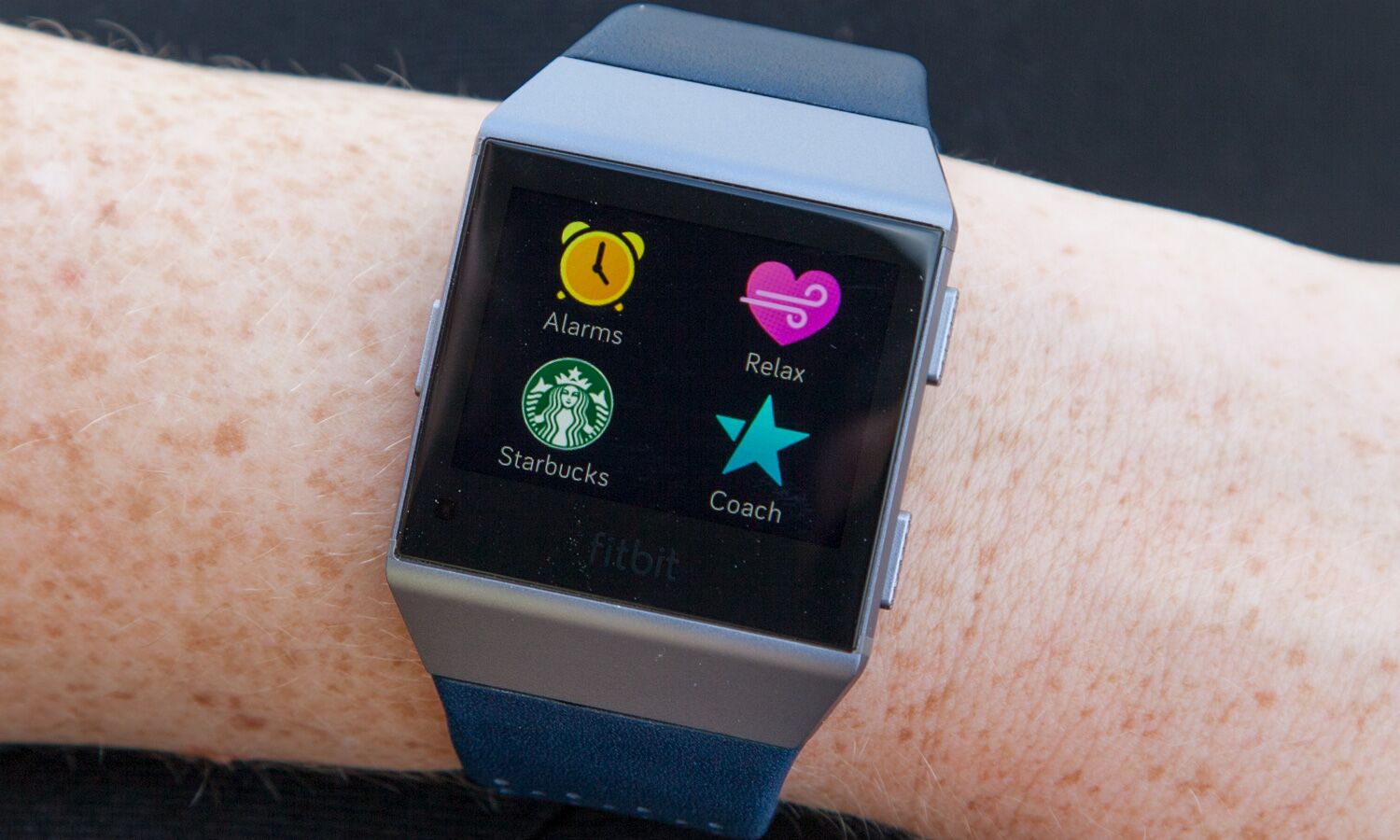
There weren't many third-party apps at launch — just Pandora, Starbucks, Strava and a weather app from AccuWeather — but each has a core function that complements how you use a fitness-focused smartwatch. Listening to music offline, buying coffee, comparing run times and checking the forecast without having a phone strapped to your arm or in your waistband is incredibly convenient.
MORE: 10 Most Surprising Uses for Fitness Trackers
Mobile payments are just as seamless on the Ionic as they are on the Apple Watch.
You install apps on the Ionic by browsing the App Gallery in the Fitbit app for iOS and Android. This is also where you customize settings and make changes in your installed apps, such as adding a city to the Weather app or adding your Starbucks card for buying a latte right from your wrist.
Installing and managing app settings on Fitbit OS is simple; just know that you won't have many apps to use right out of the gate. Fitbit rolled out out more third-party apps in December as part of its first major software update for the Ionic. The new additions include the New York Times, Flipboard, Yelp and Hue Lights. The Times and Flipboard put the day's major headlines on your wrist, though Flipboard is focused specifically on health and fitness stories. You can choose between topics such as running, sleep, healthy eating and the outdoors. Don't expect to be able to read full articles on your wrist. Both the NYT app and Flipboard give you just the opening paragraph and a small photo.
Fitbit said more apps are coming by the end of the year, including Nest, Uber and United Airlines. In January, Lyft, Walgreens and British Airways are expected to land on the Ionic.
Fitbit is also allowing developers to create watch faces, so you can tailor your Ionic's look to your taste. I wish the Ionic allowed you to change the face directly on the watch, like the Apple Watch and Android Wear watches do. Instead, you have to select a face in the Fitbit app on your phone and then sync the two devices so the new clock will appear. Fitbit is opening this feature up to everyone, so even I can make my own watch face (if I want to, which I don't really).
No Phone Required
A smartwatch that has to be connected to a smartphone all the time isn't all that useful, and that's where the Fitbit Blaze fell short. The Ionic is much more powerful on its own.
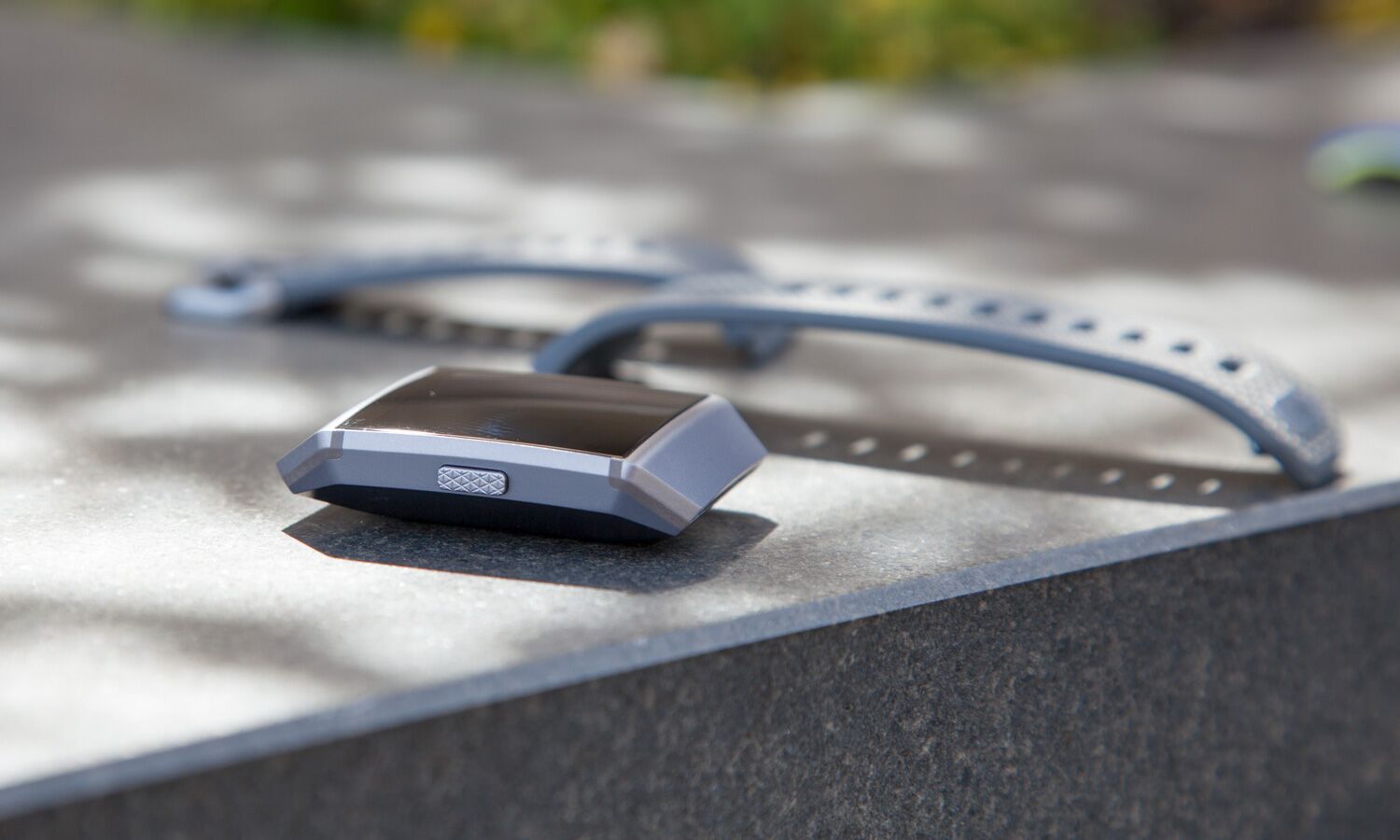
To start, the device has 2.5GB of local music storage, so you can save up to 300 songs on the device or download Pandora playlists to listen to offline (you need a paid Pandora account to access that functionality). Once you store music on the Ionic, you can pair Bluetooth headphones to the watch and head off for a workout without a phone. In 2018, Fitbit is bringing Deezer's offline music streaming to the Ionic.
I tested music playback with Fitbit's own Bluetooth headphones, Fitbit Flyer, which pair seamlessly with the watch in the same way that Apple's AirPods are the best fit for iPhones. (The $130 Flyer is otherwise a little too expensive for what it offers, which is a very basic sport headphone experience.)
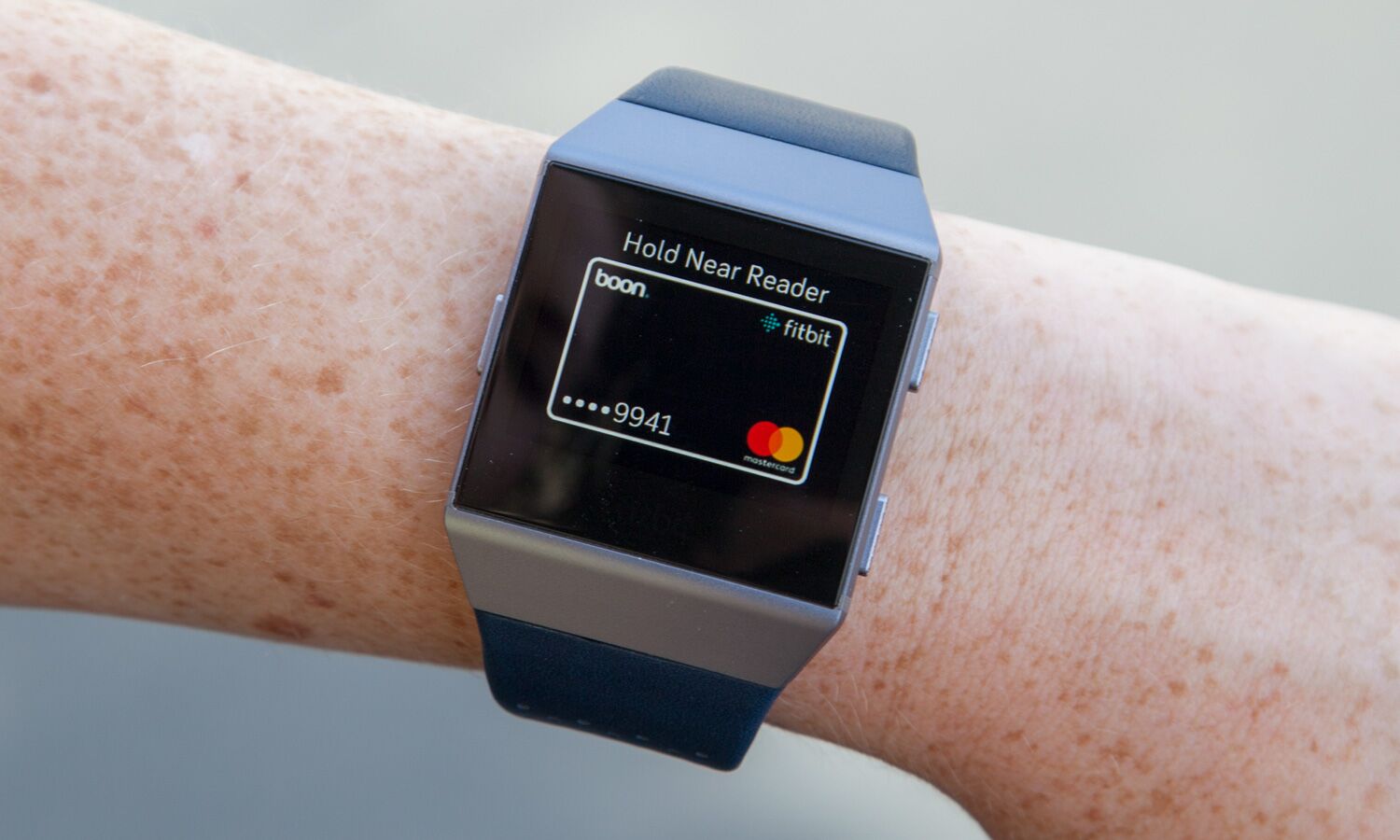
Fitbit also put an NFC chip in the Ionic, which means you can store a card on the watch to make purchases. The payment process is just as seamless on the Ionic as it is on the Apple Watch. You press and hold the Ionic's left-side button near the payment terminal, and it immediately processes the transaction.
I tested the Ionic's mobile-payment feature at Whole Foods, and it was muchfaster than my usual chip-card experience, which seems to get longer and more arduous all the time. The Ionic requires a PIN to secure your card, and you have to enter this number every time you remove the watch and put it back on (or every 24 hours, whichever comes first). In December, Fitbit added the ability to store multiple cards in the Ionic's wallet and choose between them at the time of payment.
How Well It Works
The Ionic's bright touch screen, which is easily viewable in daylight, works in tandem with three hardware buttons to help you navigate around and quickly access specific features. A quick press on the left-hand button turns the display on and off, while a longer press on the same button activates Fitbit Pay — more on that later.
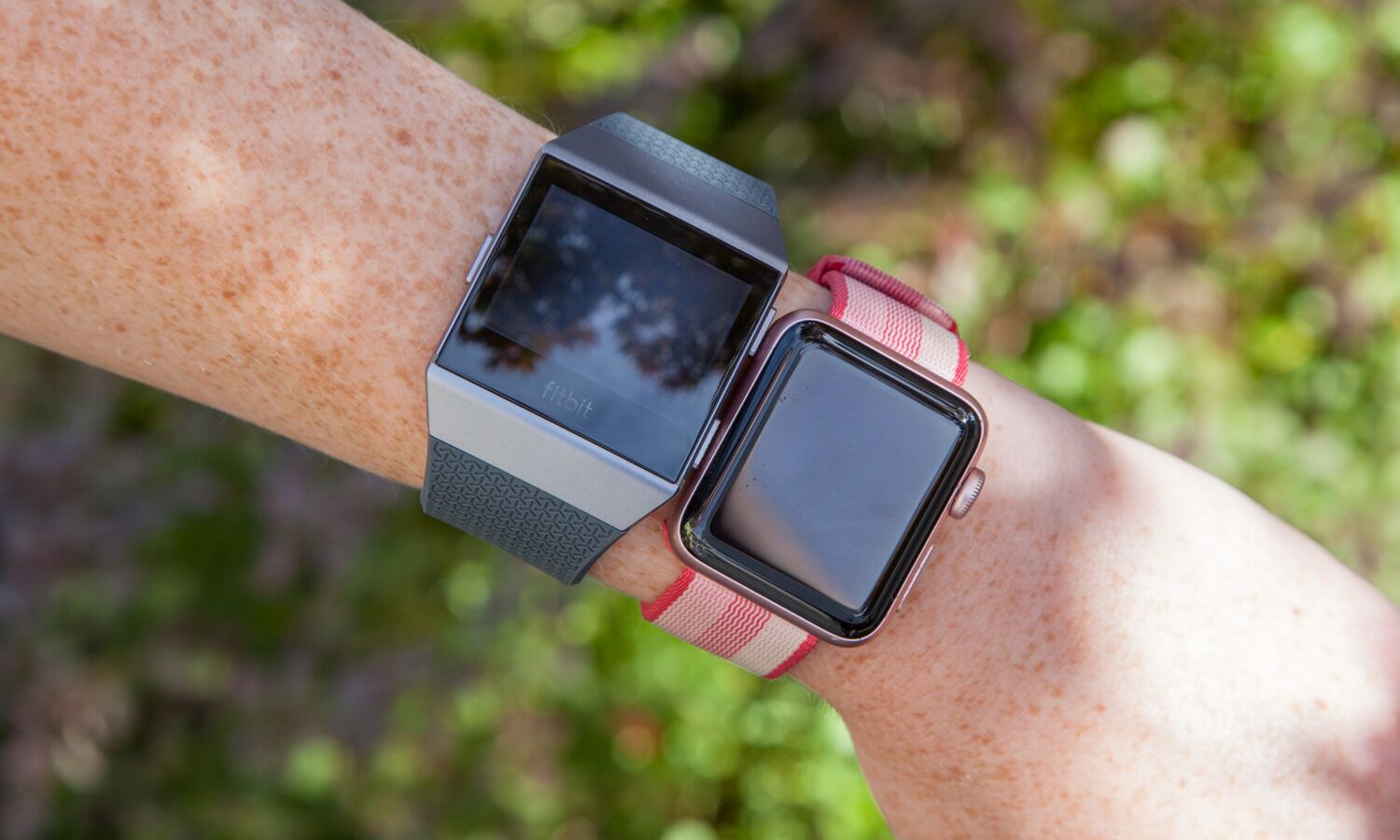
There's no option to keep the watch face on at all times. Instead, you tap to wake or toggle a setting to have the Ionic wake when you turn your wrist. An always-on display is available during workouts by tapping the Settings gear in the Exercise app, but it's a battery drain.
The touch screen itself isn't as responsive as other smartwatches I've used, particularly with sweaty fingers during a workout. While you're exercising, you can swipe the screen to view stats — everything from pace per mile to calories burned — but pausing and ending a workout are controlled via the side buttons on the right.
With Ionic, Fitbit nails two things that no other smartwatch has managed: sleep tracking and battery life.
A long press on the bottom right button in the Exercise app brings up notifications from your smartphone, while a long press on the top right button brings up your current music so you can skip tracks. This isn't exactly intuitive; it took me a few runs to realize I could control my music from the watch directly and not just on my headphones.
MORE: Best Smart Scales Tested and Rated
Apps are arranged in grids of four, and you have to swipe left in the watch face to view additional app pages. This isn't a problem right now, because there are only a handful of apps in Fitbit's App Gallery, but it could be cumbersome as more apps come to the Ionic. You can press and hold an app icon to move it to a different screen or to another position on the same screen.
Bottom Line
For Fitbit users who are fans of the company's older devices, the Ionic is a huge upgrade. Fitbit is promising that more features — such as expanded NFC capabilities, more apps, and health features like sleep-apnea alerts — are on the horizon.
However, Fitbit is launching the Ionic at the same time that Apple is releasing its third-generation Apple Watch. For just $30 more, you can buy a more stylish smartwatch that comes in two sizes and has many of the same features as the Ionic: GPS, continuous heart rate-monitoring, swim tracking, mobile payments and offline music storage for listening to songs with Bluetooth headphones — in addition to an App Store with thousands of watch apps instead of just a handful. The Apple Watch Series 3 also offers LTE connectivity in the pricier $399 model.
Of course, the Apple Watch is useless to Android users. And Ionic offers sleep analysis, Pandora integration, longer battery life than the Apple Watch, and a community of Fitbit users who have been encouraging and competing against one another for years. For some people, the Ionic will be the smartwatch they've been waiting for.
I just wish Fitbit had put more thought into the design of this watch. A smartwatch has to offer more than just fitness features to be worthy of your wrist, and for me, the Ionic falls just short of great.
Credit: Shaun Lucas/Tom's Guide
Caitlin is a Senior editor for Gizmodo. She has also worked on Tom's Guide, Macworld, PCWorld and the Las Vegas Review-Journal. When she's not testing out the latest devices, you can find her running around the streets of Los Angeles, putting in morning miles or searching for the best tacos.
